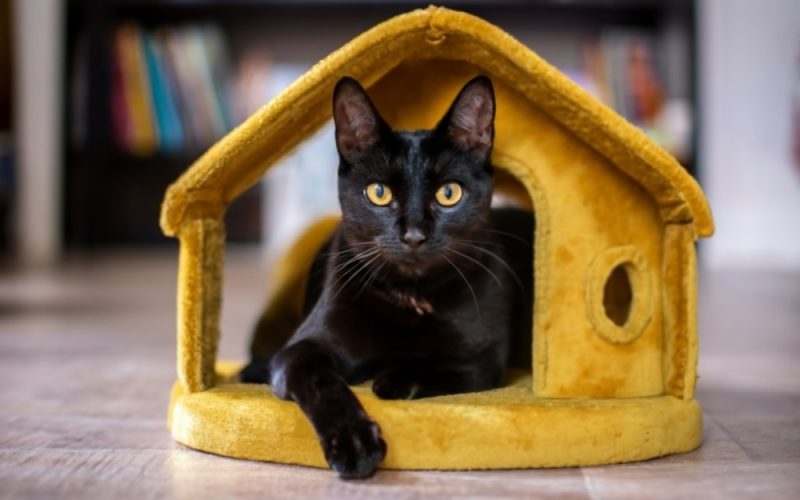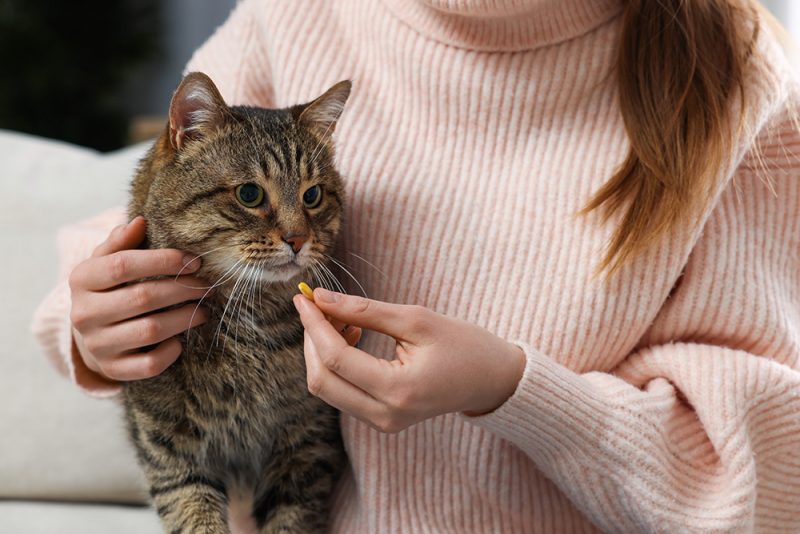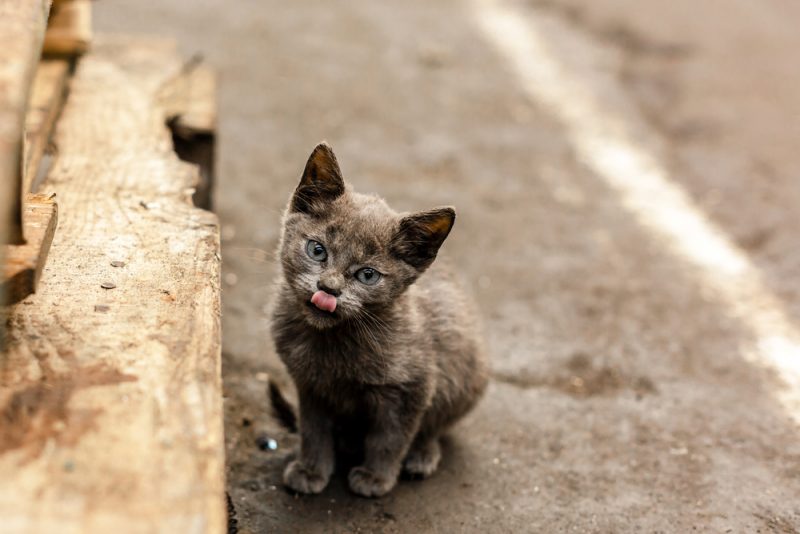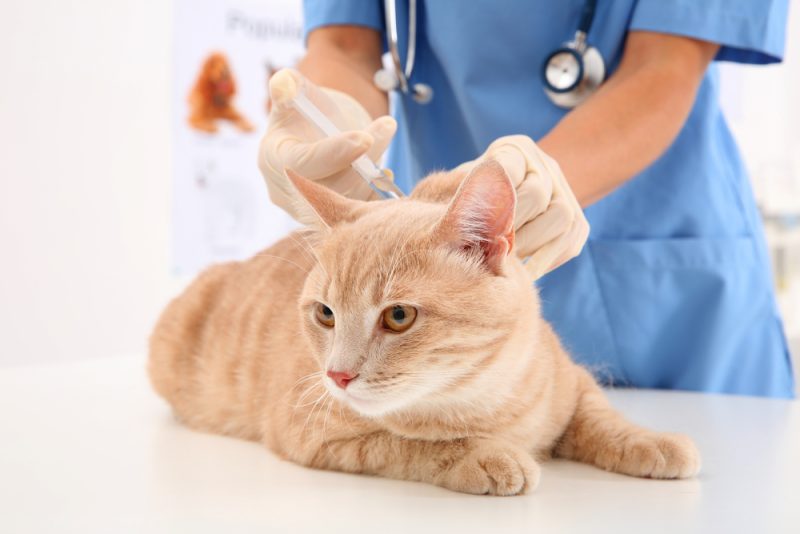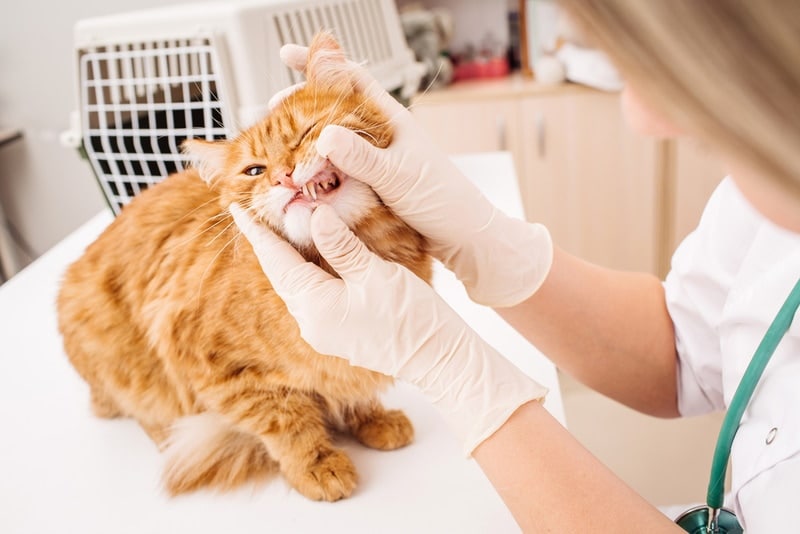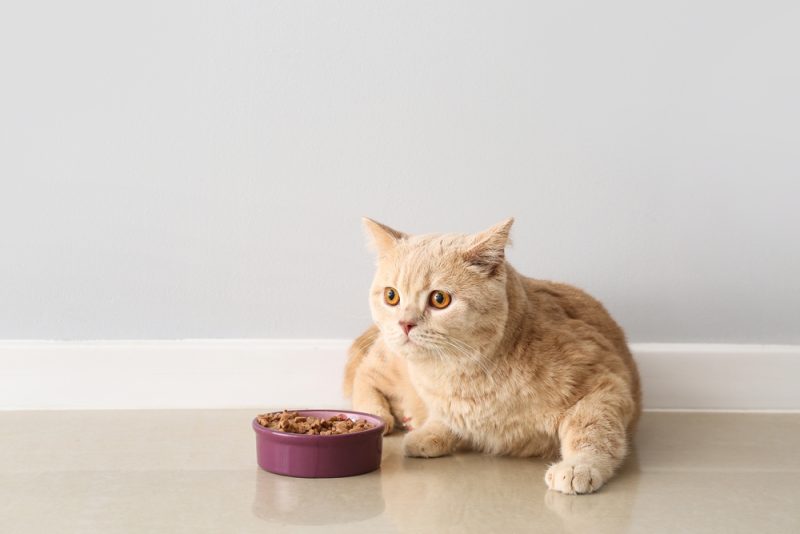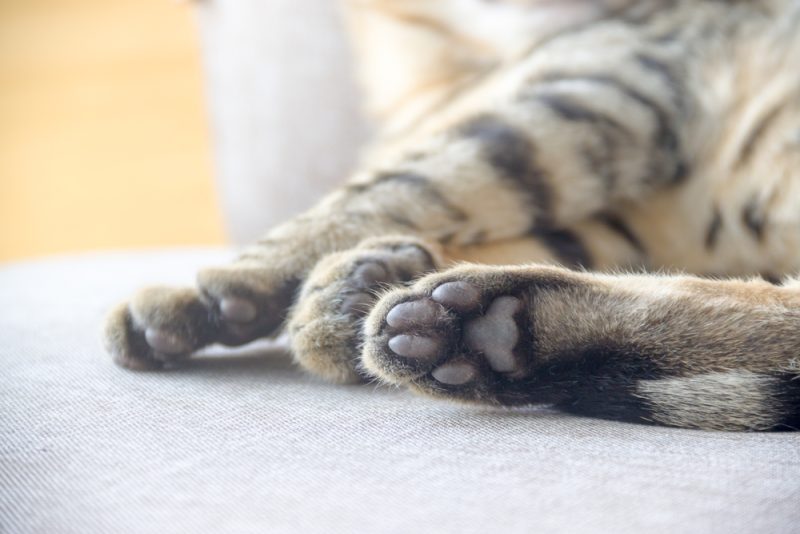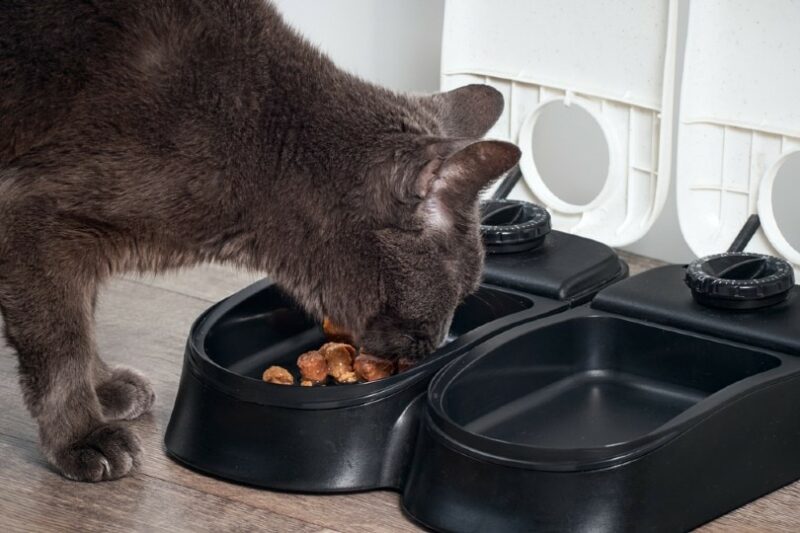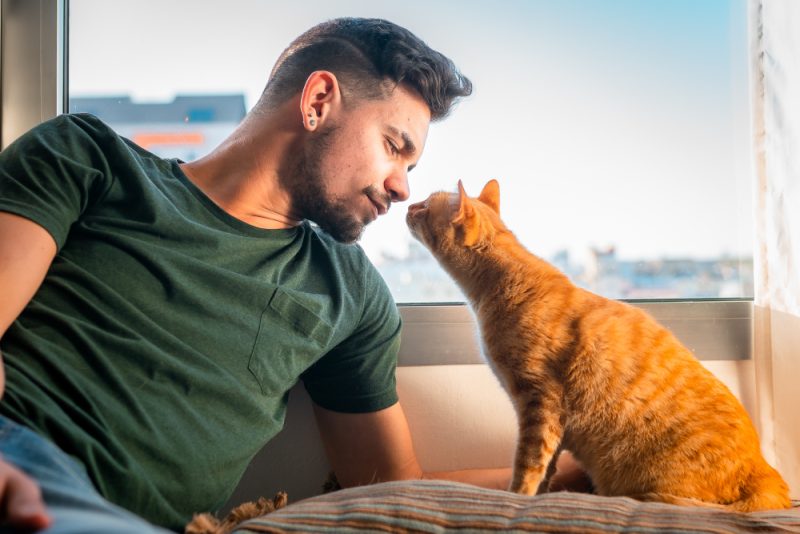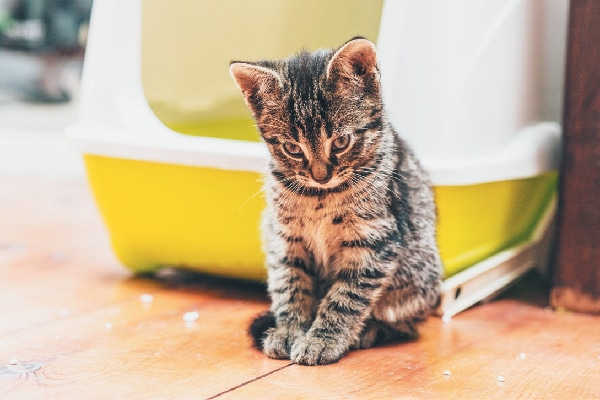Let’s be real, there’s something magnetic about a black cat. With their sleek coats and piercing eyes, they’re equal parts elegance and mystery. But here’s the twist: not all black cats are created equal.
You may have heard of the Bombay cat, that silky, panther-like breed with glowing gold eyes. But just because a cat’s fur is black doesn’t mean it’s a Bombay. In fact, black is the most common coat color in the feline world, showing up in dozens of breeds—and in plenty of lovable mixed-breed moggies too.
So, what really separates a true Bombay from your average black cat? From personality quirks to grooming needs, we’re breaking down the big differences that every cat lover should know.

7 Surprising Differences Between Bombay Cats and General Black Cats
1. Bombay is a Breed, ‘Black’ Represents Their Color
Let’s start with the basics. A Bombay cat is a specific, recognized breed that was created in the 1950s to resemble a miniature panther. Their look is no accident—it’s the result of breeding sable Burmese cats with black American Shorthairs.
On the other hand, a “black cat” could belong to any number of breeds, like a Persian, Maine Coon, Cornish Rex, you name it. Or it might be a mixed-breed domestic shorthair (also known as a moggie). In short, all Bombays are black cats, but not all black cats are Bombays.
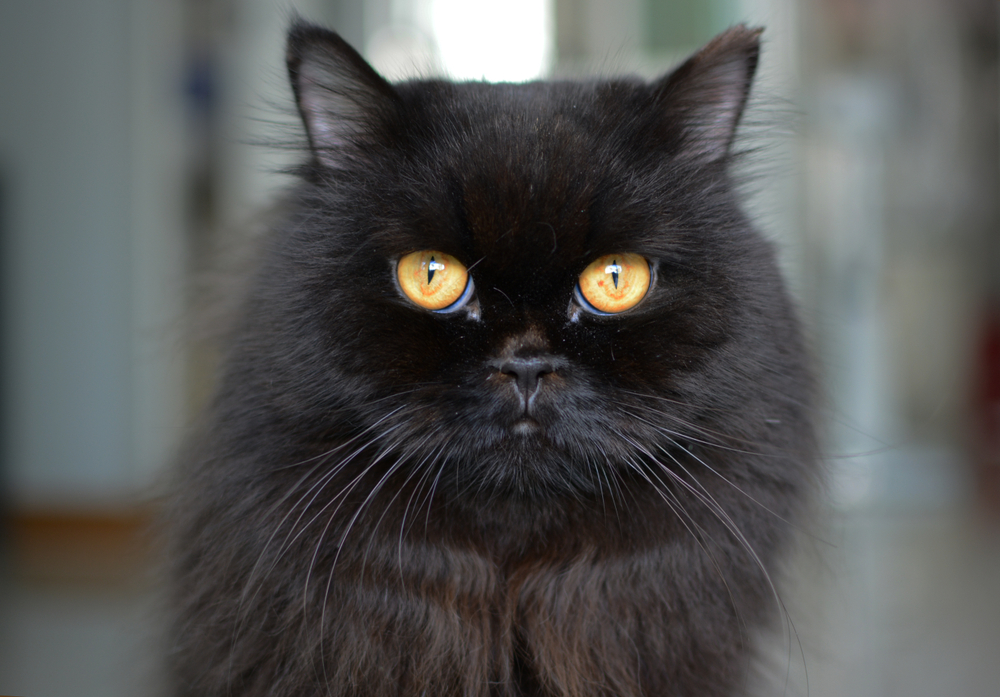
2. Their Looks Are Similar, but Not Identical
Yes, they’re both black-coated beauties, but a Bombay has a very distinct look.
Bombay cats are compact, muscular, and built like mini athletes. Their coats are jet black all over, including their whiskers and paw pads (which many black cats don’t have). And their eyes? Always striking copper or gold, thanks to breed standards.
By contrast, other black cats might have green or yellow eyes, mixed-color whiskers, or varying body shapes depending on their breed background.
3. Bombay Cats Have Predictable Personalities
Bombay cats are famously people-focused. They love being around their humans and will often follow you around the house, chirping and chatting as they go. They tend to be playful but not hyper, and they’re usually great with kids, other cats, and even dogs.
Black cats from other breeds, or mixed-breed backgrounds, can vary wildly. Some might be affectionate lap cats, while others prefer quiet observation from a distance. You just never know what you’ll get with a moggie… and that’s part of their charm!
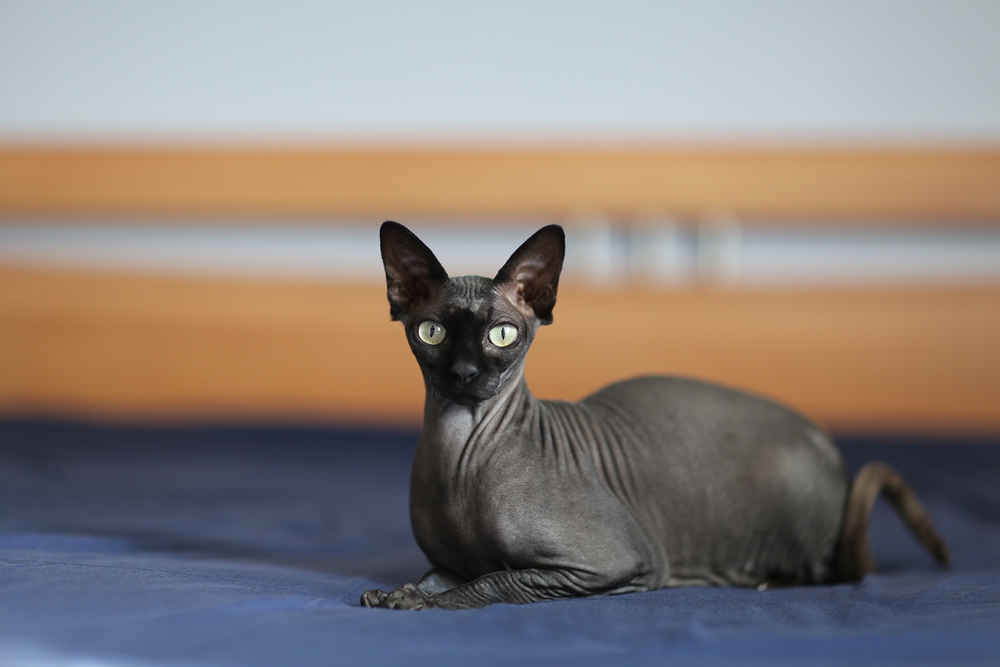
4. Exercise Needs Are About the Same—But Motivation Varies
Both Bombay cats and other black-coated kitties typically need 20 to 45 minutes of daily activity, but how they get that exercise can differ.
Bombays are naturally curious and athletic. They’ll chase teaser toys, scale cat trees, and happily pounce at laser dots. They love interactive play and tend to crave attention from their humans.
Other black cats might be just as active or total couch potatoes. A black Persian, for example, is more likely to lounge luxuriously than leap across the room. If you’ve got a laid-back black cat, you might need to get creative to encourage movement (hint: try catnip or feather wands).
5. Training a Bombay Is Shockingly Easy
Looking for a cat you can teach tricks to? Go Bombay.
These cats are whip-smart and love pleasing their people. Clicker training, high-fives, and even leash walking are totally within reach. They learn fast as long as you keep sessions short and rewarding.
Some black cats of other breeds (like Cornish Rex or Devon Rex) are just as trainable, but it depends on the cat. Mixed-breed black cats might be brilliant or stubborn. Training success usually comes down to patience, treats, and your cat’s individual personality.

6. Grooming and Health Vary by Breed
Bombay cats have short, low-maintenance coats that rarely mat. A quick weekly brush is enough to keep them shiny. Health-wise, they’re generally robust, but may have a slightly higher risk of kidney or pancreatic conditions.
Black cats from other breeds can have very different care needs. A long-haired black Persian needs daily grooming. A black Maine Coon may be prone to joint or heart issues. Even mixed-breed cats can face common concerns like dental disease or obesity, especially if overfed or under-exercised.
The bottom line: know your cat’s breed (or best guess) to tailor their care accordingly.
7. Their Lifespans Can Differ, Too
Bombay cats usually live around 12 to 15 years, assuming good care and a healthy lifestyle. Meanwhile, some black cats, especially moggies, can live up to 17 or more years!
That’s because mixed-breed cats often benefit from hybrid vigor, a term that means fewer inherited genetic issues. But breed plays a big role: for example, black Maine Coons may have shorter lifespans due to size-related conditions.
As always, regular vet checkups, a balanced diet, and lots of love are the keys to a long, happy life, no matter the breed.

Which One Belongs in Your Home?
If you’re looking for a playful, affectionate cat who bonds deeply with the family and wants to be involved in everything, a Bombay could be the perfect fit. They’re ideal for households where someone’s usually home, and they thrive with other pets around.
Prefer a more independent vibe or just want to adopt a rescue with personality? A black cat of another breed, or a fabulous mixed moggie, might be your soulmate. They come in all shapes, sizes, and temperaments, but they’re almost always adaptable and affectionate in their own way.
![]()
More Than Just a Color
Whether you’re team Bombay or smitten with a classic black kitty, one thing’s clear: black cats are anything but boring. They’re beautiful, bold, and often full of personality, no matter their breed.
So don’t be fooled by that glossy black fur. Take a moment to look deeper. Because behind every black cat is a story and possibly your next best friend.
Feature Image Credit: Naseeb TN, Shutterstock
Did You Know?
